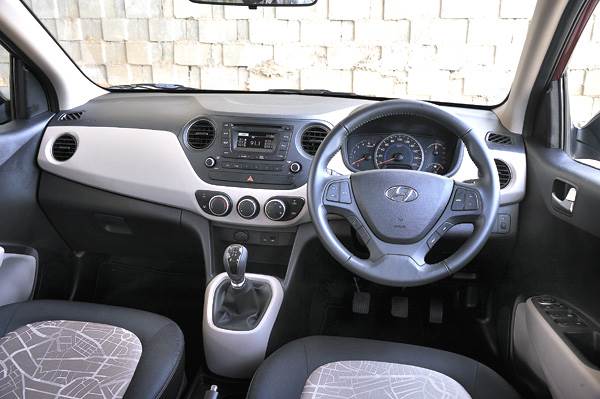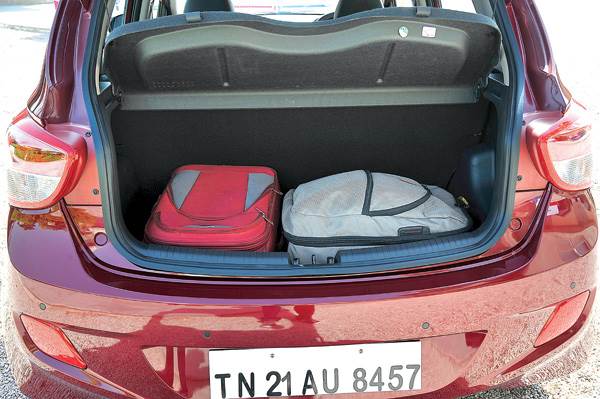2013 Hyundai Grand i10 review, test drive
We give Hyundai’s latest hatchback, the Grand i10, the full road test treatment with its 1.1-litre U2 diesel engine.
Published on Oct 24, 2013 09:02:00 PM
3,25,017 Views
Follow us on



Slide into the comfortable driver’s seat and you are greeted by a chunky, leather-wrapped steering wheel, which looks like it has been inspired by the Elantra and it has similar quality too. We also like the fact that the audio controls on it are well thought out. Functions you’d access the most often, such as mute and volume control, have been assigned larger buttons that are within easier reach. Hyundai has also made sure all the ‘touch-points’ exude a nice premium feel. The buttons are well damped and all the rotary knobs are treated with a premium knurled finish that further adds a touch of class to the cabin. What is surprising though is that even on the highest spec car, Hyundai has omitted climate control and given a manual air-con instead. Also, while the HVAC controls are large and within easy reach, they are quite stiff and clunky to operate.
The two-tone dash is neat and clean, with no extraneous or over-styled features, giving the hatchback a more mature look. The top half is finished in high-quality, non-reflective black plastic. The toffee-like beige used for the lower portion of the dash again looks high quality but may not be to everyone’s liking. The gear lever has superb detailing as well with a glass finish and the gear numbers written in a clean metallic finish. All throughout the cabin, Hyundai has judiciously used faux metallic highlights in the right places and to good effect.

Move to the rear and the Grand i10 reveals its greatest strength. In terms of legroom, the extra 40mm of wheelbase has gone into making this rear bench quite spacious and you won’t feel shortchanged here. Legroom is particularly good and even tall drivers can be comfortable behind the wheel without crushing the knees of the rear passengers. The slightly reclined rear bench angle adds to the comfort level too. But while you won’t complain about the legroom, the seat squab or base isn’t that generous and you sit a touch low, which is accentuated by the high window line. Also, the fixed headrests of the front seats do obstruct visibility a fair bit and make the rear seat not as airy as Hyundai intended.
A segment first, however, is the rear air-conditioning vents but with the afternoon sun beating down during our test the cooling wasn’t as effective as we would have liked it to be.
In terms of practicality, there are plenty of storage spaces inside the cabin. You get one-litre bottle holders in each of the doors, two large cup-holders behind the gearlever, and a cubbyhole for storing your phone just below the air-con controls. The rear scooped-out parcel tray has also been designed to hold odds and ends from flying forward in the event of sudden braking.

Passengers hooked onto their smartphones and tablets will be quite pleased that this car has not one but two 12V outlets – one in the front and one mounted on the rear AC console. Like the spacious cabin, the illuminated boot, at 256 litres, is quite large and just about 10 percent shy of that of the Figo which has the largest boot in this segment.
Copyright (c) Autocar India. All rights reserved.


















Comments
Member Login
Personal Details
No comments yet. Be the first to comment.